North Korea Drones On: Redeux
This article is an updated version of “North Korea Drones On” by Joseph S. Bermudez Jr., published on 38 North on July 1, 2014.
The recent revelation that a North Korean unmanned aerial vehicle (UAV, sometimes called drone) crossed south of the demilitarized zone (DMZ) combined with the April 2012 presentation of domestically manufactured UAVs and the subsequent 2014 recovery of wreckage from four that had crashed in South Korea, continues to reinforce the considerable concerns about Pyongyang’s UAVs and their ongoing operations. While many are under the impression that these capabilities are a recent development, in fact, North Korea has been operating these systems for more than two decades.
Background
North Korea’s interest in UAVs is believed to date to the period from February 1970 to June 1973 when US UAVs (the AQM-34Q), many based at the Osan Air Base in South Korea, flew 268 missions along its coasts monitoring communications.[1]
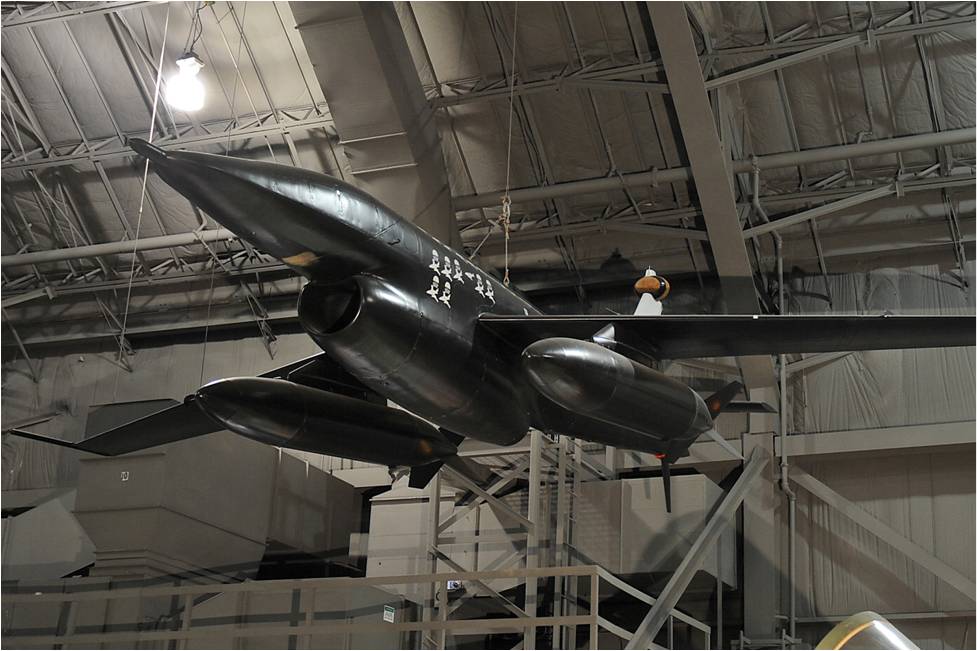
This initial interest was reinforced by lessons learned from the Israeli use of UAVs during the 1973 Arab-Israeli War.[2] It is likely that the final factor leading to North Korea’s decision to acquire their systems was the 1988 announcement by the ROK Ministry of National Defense (MND) that it was seeking financing to build a fleet of reconnaissance UAVs.[3]
North Korea acquired its first UAVs from China sometime between 1988 and 1990. These are believed to have primarily been the Northwestern Polytechnical University D-4 (subsequently called the Xian ASN-104) piston engine reconnaissance UAVs although a few jet-propelled target drones may have also been acquired.[4]
North Korea initiated a domestic development and production program in the early 1990s, as a result of the US use of UAVs during Operation Desert Storm. South Korean sources indicate that by late 1993, North Korea was manufacturing at least one reconnaissance UAV based on the Chinese D-4 and possibly experimenting with the manufacture of a target UAV probably based upon the D-5.[5]
In 1994, Syria provided North Korea with access to its UAVs, including the Russian manufactured DR-3 Reys (a high-speed, low-altitude system with a range of 60-70 km) and information concerning their operational use.[6] More significantly, Syria is believed to have provided the North with a few models of this system, confirmed in subsequent reports.[7] It is unclear if North Korea then attempted to manufacture the DR-3, but it is reported to be in service with the Korean People’s Army (KPA).[8] Several years later, during 1997-1998, North Korea acquired 10 Pchela-1T UAVs, a small propeller-power UAV with similar characteristics to the KPA’s D-4 but with a better sensor package, from Russia.[9]
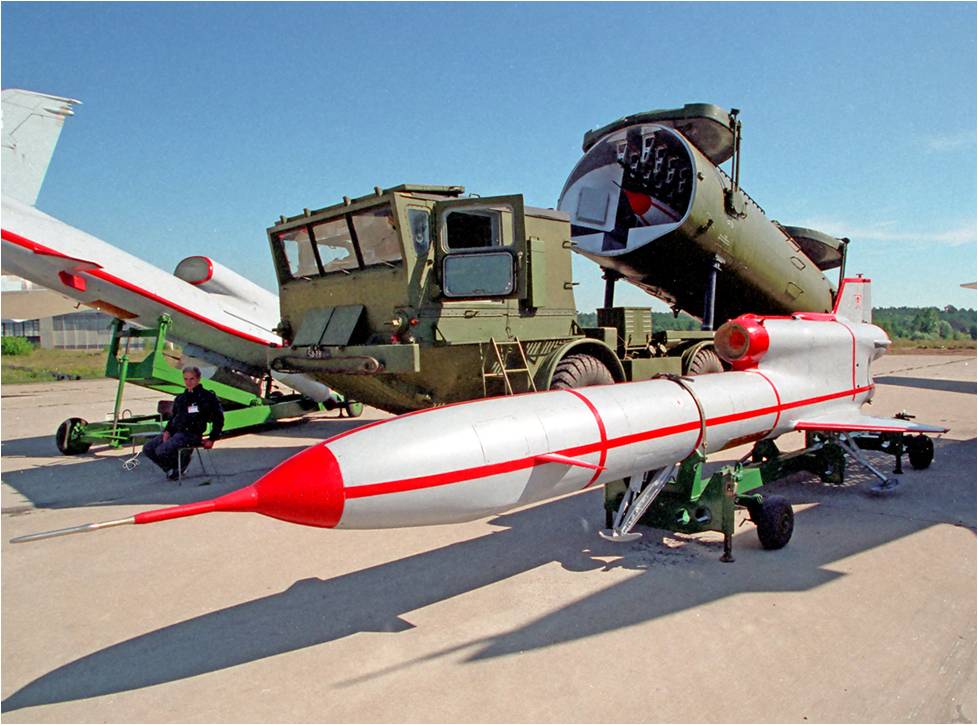
By the early 2000s, North Korea’s inventory of reconnaissance UAVs was growing. Moreover, Pyongyang was manufacturing small numbers of reconnaissance UAVs based upon the Chinese D-4, known locally as the Panghyon, as well as at least one small piston engine reconnaissance/target UAV. It was also experimenting with other reconnaissance and target drones. More significantly, the North was employing these systems to conduct reconnaissance operations along the DMZ and the islands along the Northern Limit Line (NLL) in the West Sea (Yellow Sea).[10]
Expansion of the UAV program continued between 2005 and 2014, following a general trend of gradually introducing more capable systems at a lower unit cost, which allowed them to be deployed more widely. (The exception to this is the new jet engine reconnaissance/attack UAV, which appears to be designed to supplant any existing DR-3 systems). Key activities include:
- The continued manufacture of small numbers of Panghyon I and II UAVs;
- The acquisition of a small number of Chinese Sky-09P commercial UAVs from the Taiyuan Navigation Friend Aviation Technology Company (perhaps through a front company in Hong Kong);
- The possible manufacture of a domestic version of the Sky-09P at the December 12 Factory in Pyongyang;
- The acquisition of examples of the Beechcraft MQM-107D Streaker target UAV through the Middle East and use of its technology to develop a domestic reconnaissance/attack UAV; and
- Attempts to modify the Pchela-1T reconnaissance UAV into an attack UAV and the development of the multipurpose Durumi UAV (possibly based upon Chinese UAV technology).[11]
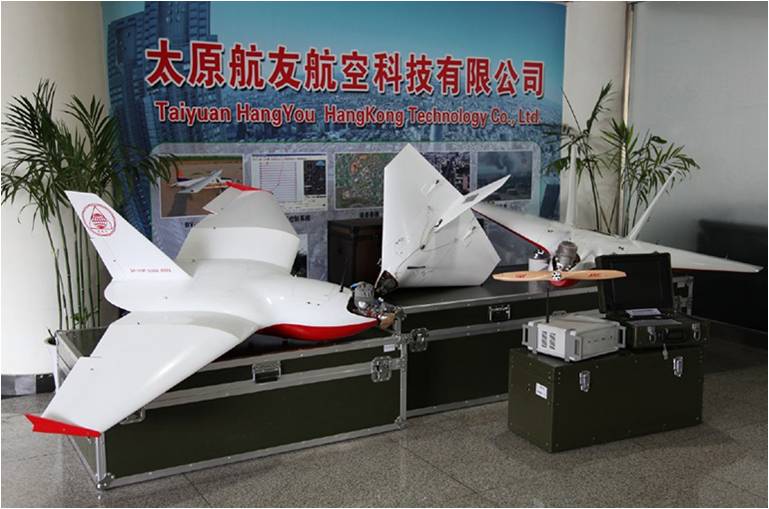
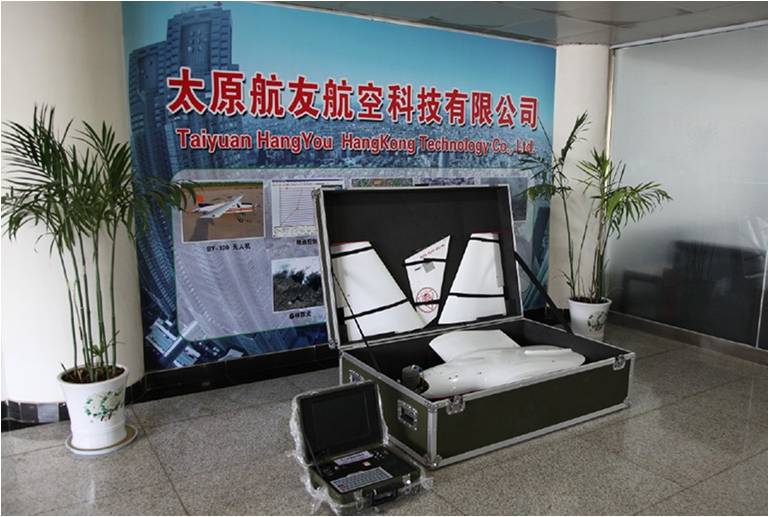
Accompanying these developments, North Korean scientists, engineers and academics have been openly publishing papers on technology directly applicable to UAVs, indicating that work has been ongoing to develop several domestic small UAVs and that efforts were being made to obtain foreign (e.g., Chinese, Iranian, Russian, etc.) technology.[12]
DPRK UAVs Emerge from the Shadows
On August 9, 2010, Pyongyang conducted a live-fire artillery exercise targeting the waters north of Yeonpyeong Island—a South Korean-held island south of the NLL and 210 kilometers northwest of Seoul. In describing the exercise, a South Korean Joint Chiefs of Staff spokesman provided one of the first detailed references to North Korean UAV operations. He stated:
The North flew a drone, possibly for surveillance, after it fired artillery shells Monday last week into waters in the Yellow Sea. …This seven-metre (23-foot)-wide drone hovered over the North’s waters, keeping a very low altitude, some 20 kilometres (13 miles) north of Yeonpyeong islands. …It might be a surveillance drone or a decoy.[13]
This location would have placed the UAV over the Kangnyong Peninsula (i.e., Kangnyong-bando) and above the artillery units conducting the exercise. The description of the UAV as “7-meters-wide” is perplexing since none of the known North Korean UAVs matches this dimension. In retrospect, the exercise is now viewed as preparation for the November 2010 artillery attack on Yeongpyeong Island.[14]
Military Parades
During February 2012, South Korean Army sources announced that North Korea was developing an attack UAV based upon “…high-speed U.S. target drones imported from a Middle Eastern country…”[15] The reported intention was to mount a small bomb on the UAV for the attack mission. The “target drones” were subsequently identified as the Beechcraft MQM-107D Streaker.[16] While most published reports suggested that Syria was the source, Egypt was more likely since it acquired the MQM-107D during the mid-1980s. These same reports also indicated that North Korea was modifying its Pchela-1T into an attack configuration.
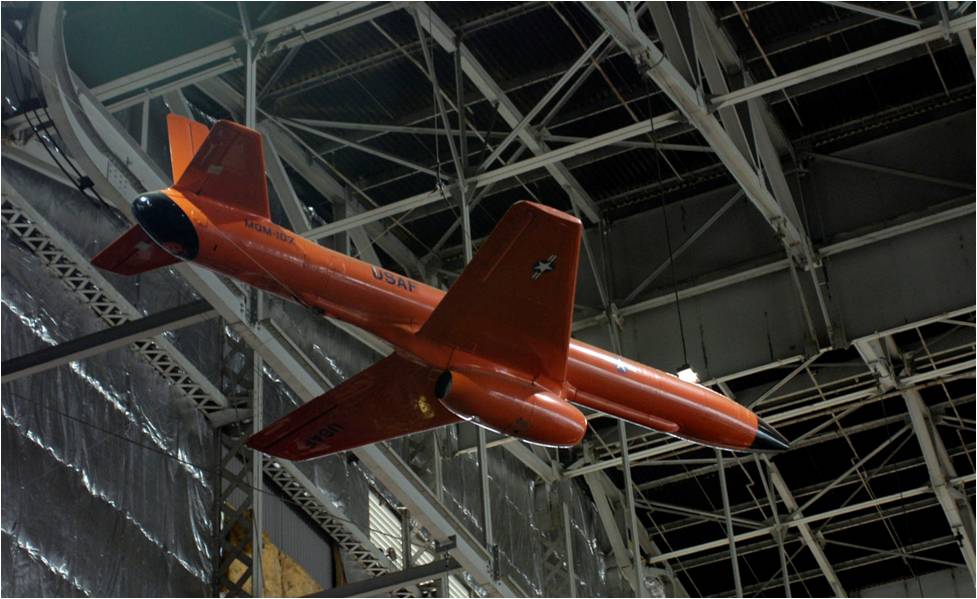
Two months later, during the April 15 military parade in Pyongyang, North Korea displayed its new UAV for the first time. While superficially similar to the MQM-107D, the UAV is clearly not a copy. Detailed examination of ground photos reveals that the new drone is shorter, and has both a greater wingspan and a different engine configuration. Moreover, its sensors are mounted under the fuselage immediately in front of the engine intake. There are also two small winglets—one above and one below—on the ends of the main wing. The new UAV is apparently constructed in at least two versions—reconnaissance and attack.
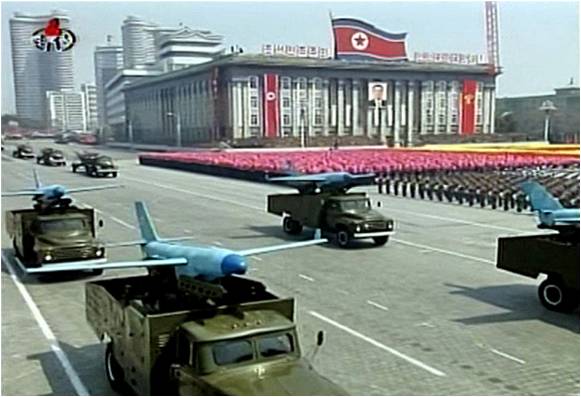
There are also two different launchers—the first mounted on a Zil-130 light truck chassis and the second uses a four-wheel towed mount. To enable launches from a short ramp, the UAV is fitted with two mounts—one on each side, aft and below the main wing—for booster rockets. All of the UAVs seen to date have been camouflaged using a mottled light-blue, dark-blue pattern with a dark blue nose (to blend into the sky) and white numbers on the tail.
A year later, KCNA reported that Kim Jong Un oversaw a live-fire training exercise at the Taesan-dong Training Area southeast of Pyongyang. During the exercise, he “guided” the employment of three,
…super precision drone planes assaulting targets and a firing drill of self-propelled flak rocket destroying “enemy” cruise missile coming in attack in low altitude. The drone planes were assigned the flight route and time with the targets in South Korea in mind, Kim Jong Un said, adding with great satisfaction that they were proved to be able to mount super precision attack on any enemy targets.[17]
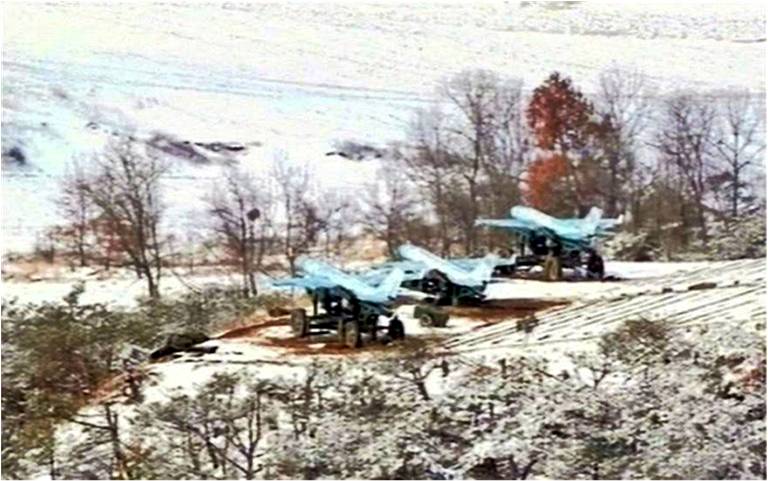
The new UAV was displayed again during the 60th Anniversary of Fatherland Liberation War parade in July 2013 in Pyongyang, but there were no noticeable differences in its characteristics from the previous year.
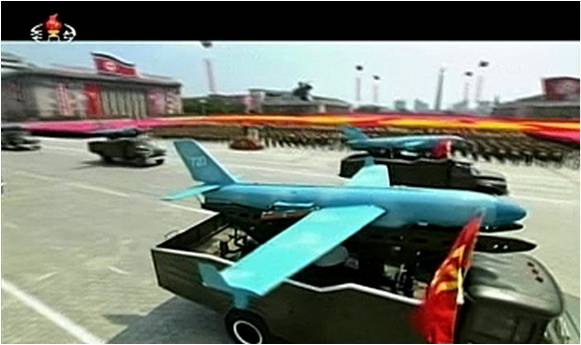
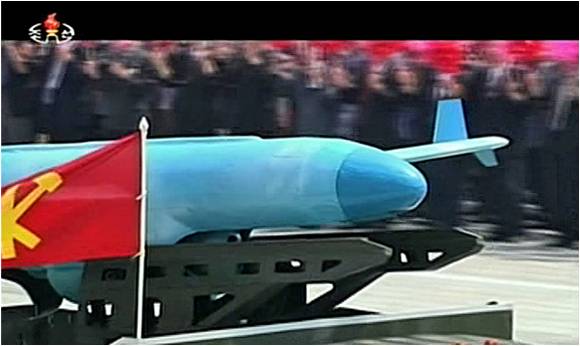
Crash Landings
During April 2014, the South Korean MND announced the recovery of remains from four North Korean UAVs that had crashed in South Korea between October 2013 and September 2014.
Samcheok-si[18]
In early April 2014, South Korean troops were led to the site of a UAV crash on a mountain near the east coast city of Samcheok (a.k.a., Samcheok-si), 195 km southeast of Seoul and 130 km south of the DMZ, after three local residents informed them that they had discovered the wreckage in October 2013 while searching for medicinal herbs.
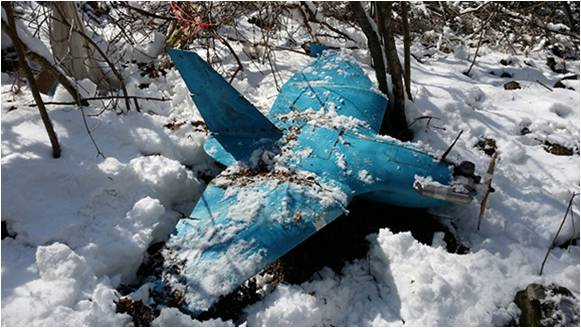
One of the residents said that he had removed the commercial digital camera he found at the crash site, saving the memory card but eventually discarding the camera. While he used the card for his personal photos, making recovery of the UAVs original images impossible, the resident had viewed them and remembered that some were of a beach near Samcheok.
The UAV’s mission remains unclear but a number of important military and strategic facilities are located in the Samcheok area, including the Hanul Nuclear Power Plant, the largest in South Korea.[19]
Subsequent examination of the UAV revealed that it was a Taiyuan Sky-09P that employed a parachute recovery system, camouflaged using a mottled light-blue, dark-blue pattern, carrying a lithium-ion battery to power its 0.9 GHz GPS and flight systems and a commercial digital camera (it was not capable of transmitting images). The UAV, which flew a preprogrammed flight plan based upon waypoints using an onboard GPS system, evidently took off from a point 17 kilometers east of Pyonggang County, Kangwon Province, and was programmed to return to the point of origin, suggesting a minimum round trip covering a distance of 360 kilometers. This round trip is considerably longer than the 150-200 kilometers normally attributed to this system and may indicate that it crashed due to fuel exhaustion.
ROK MND officials have stated that this UAV, while similar to the one discovered near Paju-si (below), is a different size.[20] If correct, that may mean North Korea is manufacturing its own version of the Sky-09P.
Paju-si[21]
A North Korean UAV crashed on March 24, 2014 near the city of Paju (a.k.a., Paju-si), 36 kilometers north-northeast of Seoul and 10 kilometers east of the DMZ. Subsequent examination revealed it to be a Taiyuan Sky-09P, similar to that found near Samcheok. The flight originated 5 kilometers northwest of Kaesong City, South Hwanghae Province and it was programmed to return to the point of origin, suggesting a minimum round trip of 150 kilometers. The UAV, which took approximately 200 photographs, followed a flight path over key military installations and central Seoul, including the ROK presidential compound (Cheong Wa Dae) and Gyeongbok Palace. It crashed near Paju on its return home, possibly due to fuel exhaustion.
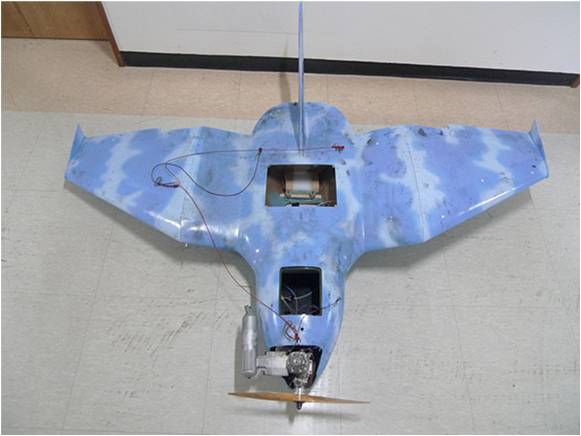
South Korean officials speculated that, because the UAV’s parachute had been refolded eight times, it had probably been test-flown, or carried out operations several times.[22] (While the UAVs found in Paju and Samcheok look similar, their sizes differ, suggesting that the North may be manufacturing its own version of the Sky-09P.[23])
Baengnyeon-do[24]
Two months later on May 31, 2014, a resident of Baengnyeong Island (a.k.a., Baengnyeong-do), 210 kilometers northwest of Seoul, discovered the crashed remains of a small North Korean reconnaissance UAV. The UAV consisted of a cylindrical 1.92-meter-long fuselage, 1.43-meter-wide shoulder-mounted main wing, v-tail, and wire-sprung landing gear and was camouflaged using a mottled light-blue, dark-blue pattern. The design was similar to a small target UAV that has been seen in numerous North Korean propaganda videos over the years.
The UAV flew a preprogrammed flight plan based upon waypoints using an onboard GPS system since there was no real-time ground control capability. It was launched from the abandoned Ongjin Airfield, 27 km southwest of Haeju City, South Hwanghae Province, and was programmed to return to that airfield, suggesting a minimum round trip covering approximately 170 kilometers.
After launch, the UAV’s preprogrammed flight plan took it to an altitude of 3,000 meters then west-southwest to the southern point of Taechong Island. Here it initiated a series of back-and-forth imaging passes that progressively moved it further north with each successive pass and eventually over Baengnyeong Island. As it approached the island, South Korean Army Vulcan air defense guns tried to shoot it down. They failed since the UAV was above their effective range. However, it eventually crashed on Baengnyeong Island due to engine failure after a flight of approximately 105 km.
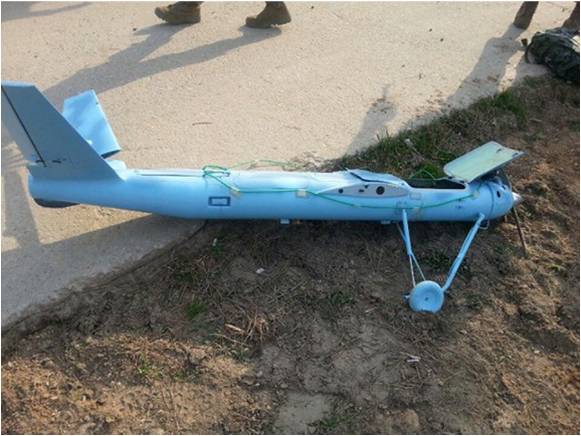
Subsequent examination of the wreckage by experts revealed that it was constructed of light polycarbonate, carried a commercial digital camera and used various Japanese and Chinese components.
Four months later, on September 15, 2014 a fisherman found the heavily damaged wreckage of a Taiyuan Sky-09P UAV in the waters west of Baengnyeong Island. A ROK MND spokesperson stated:
The result of our investigation into the wreckage found west of Baengnyeong Island confirmed that it is the same model as the drones found in Paju and Samcheok in March and April. …Our analysis indicated that the concerned drone was produced and operated in the same period as those found previously.[25]
The precise flight path flown by the UAV could not be determined as major components of the craft were missing at the time of discovery.
All equipment such as an internal engine or a camera has been lost and only an empty fuselage remains with (the suspected drone‘s) wings damaged. …Currently, it is hard to determine when or where this wreckage fell (on the waters).[26]
Continuing Operations[27]
During the August 2015 tensions between the DPRK and ROK, the North conducted several UAV reconnaissance flights across the central DMZ. The flights took place during August 22-24. The first flight was detected on August 22 at 11:59 AM and another flight was detected around 6:00 PM, “30 minutes before high-level talks began on Saturday at the truce village of Panmunjom.” An unknown number of flights occurred during that time frame.[28]
After traces of an unknown vehicle were detected by radar, the military declared it hostile and responded with an Air Force combat jet and an Army Cobra attack helicopter, but the military’s capacity to hit it was ‘limited’ because the radar detected and lost it repeatedly.[29]
The model of UAVs used for these reconnaissance missions is unclear.
Most recently, on Wednesday, January 13, 2016, a North Korean UAV was identified on radar as it crossed the military demarcation line (MDL) near the Dorasan observation post at about 2:10 PM. After issuing warnings, ROK army troops opened fire with a machine gun at the UAV, which subsequently returned north. It is presently, unclear whether the UAV was damaged. The fact that it returned so quickly after being fired upon strongly suggests that a ground-based operator was located nearby, on the north side of the MDL, and assumed control of the aircraft.
Assessment
While North Korea’s UAVs have been the subject of recent media scrutiny, in fact, Pyongyang has had an unsophisticated reconnaissance UAV capability since the 1990s. For the past decade, this force has expanded both in numbers and capabilities. Pyongyang’s UAVs force now consists of 300 UAVs and at least seven types, some of which are manufactured in several versions: 2012 attack/reconnaissance UAV, DR-3, Durumi, Panghyon I and II, Pchela-1T, Sky-09P and an unidentified reconnaissance/target UAV.[30] Investigators of the wreckage from the three crashed UAVs in 2014 have concluded that there have been numerous undetected North Korean UAV flights over South Korea.[31]
North Korea’s UAV force, while relatively unsophisticated at present, has now reached the point where it could present a security challenge for ROK and US forces on the Korean peninsula. In the future, that threat could grow to include Japan as well as US forces in East Asia if Pyongyang can develop UAVs with greater ranges and payloads, real-time video, electronic countermeasures and stealth capabilities. How rapidly that threat develops could depend on the North’s ability to acquire new technologies from China, Iran or elsewhere.
———————————————-
[1] “Teledyne-Ryan AQM-34Q Combat Dawn Firebee,” National Museum of the US Air Force, April 25, 2014, http://www.nationalmuseum.af.mil/factsheets/factsheet.asp?id=4044; William M. Arkin, “Spying 24/7 365,” Washington Post, April 6, 2002; and William Wagner and William P. Sloan, Fireflies and other UAVs (Arlington: AeroFax, 1992) 9.
[2] Tom Ripley, “UAVs in Action, 1964 to 2002 (Part 1),” Air Enthusiast, May 2002, 302-306; Teledyne-Ryan BQM-34 Firebee, ‘Mabat’ (‘Gaze’) and Northrop Checker, ‘Telem’ (‘Furrow’), June 17, 2002, http://www.iaf.org.il/iaf/doa_iis.dll/Serve/item/English/1.3.3.1.1.4.html; and Wagner and Sloan, Fireflies and other UAVs, 48-64.
[3] Robert Karniol, “South Korean RPVs will lessen dependence on USA,” Jane’s Defence Weekly, January 28, 1989, 116.
[4] For details of the D-4 and D-5 see, Mark Daly, Jane’s All the World’s Aircraft: Unmanned, 2012-2013 (London: IHS Jane’s Information Group, 2012) 19-30; and Kenneth Munson, World Unmanned Aircraft (London: Jane’s Publishing Company, Ltd., 1988) 32-35. Interestingly, one defector report—of uncertain reliability—states that “…I do know that by the 1980s products from the former Soviet Union were being copied and produced.” “Drone Discoveries the Tip of the Iceberg?” Daily NK, April 8, 2014.
[5] Interview data acquired by Joseph S. Bermudez Jr.; Defense White Paper, 1994-1995 (Seoul: Ministry of National Defense, 1995) 73-74; and “‘No Knowledge’ on New Missile,”Yonhap, September 16, 1993.
[6] For information on the DR-3, see Yefim Gordon, Soviet/Russian Unmanned Aerial Vehicles, Red Star Vol. 20 (Hinckley: Midland Publishing, 2005) 43-56; and Steven J. Zaloga, “Russian Unmanned Aerial Vehicles,” Jane’s Intelligence Review, July 1994, 291-296.
[7] “South Korean Military Oblivious To NK Drones and Their Full Range Reconnaissance Mission,” Kyunghyang Shinmun, April 7, 2014.
[8] Interview data acquired by Joseph S. Bermudez Jr.; and “DPRK Acquires Several UAVs from Middle East ‘Military Partner,’” Chosun Ilbo, April 22, 2001.
[9] Sources differ as to the date when North Korea acquired the Pchela-1T with some placing it during 1997-1998 and others during 2001. Interview data acquired by Joseph S. Bermudez Jr.; Kenneth B. Sherman, “DPRK interested in Russian UAVs,” Journal of Electronic Defense, July 2001, 20; Chu Song-min, ‘Helped by Russia, North Korea Takes Steps to Become ‘Military Arms Powerhouse,’” Sisa Journal, May 17, 2001; “DPRK Deploys Russian UAVs Along DMZ,” Choson Ilbo, May 2, 1998; “North Korean Forces Suffer Mobility Loss,” 62; “‘No Knowledge’ on New Missile,” Yonhap, September 16, 1993.
[10] Ibid.
[11] Ibid. See also, “Are N.Korean Drones Knockoffs of Chinese Products?” Chosun Ilbo, April 17, 2014; and “North Korean Mini-Drones are Made in China,” Defense Update, April 18, 2014.
[12] Ibid.
[13] “ROK Official Says DPRK Flew Drone Over Sensitive Sea Border 9 Aug,” AFP, August 17, 2010; and “Sighting of DPRK Unmanned Aerial Vehicle in Yellow Sea,” MBC TV, August 16, 2010.
[14] Joseph S. Bermudez Jr., “The Yŏnp’yŏng-do Attack, November 23, 2010, Part I,” KPA Journal, Vol. 1, No. 11, November 2010, 1-9; and Joseph S. Bermudez Jr., “The Yŏnp’yŏng-do Attack, November 23, 2010, Part II,” KPA Journal, Vol. 1, No. 11, December 2010, 1-6, www.kpajournal.com.
[15] “DPRK Developing ‘Kamikaze Drones’ Using US Drones,” Chosun Ilbo, February 6, 2012.
[16] Ibid. See also, “N. Korea Developing Unmanned Attack Aircraft From U.S. Drones,”Yonhap, February 5, 2012.
[17] Interview data acquired by Joseph S. Bermudez Jr.; and “Kim Jong Un Guides Drone Attack, Rocket Drills,” KCNA, March 20, 2013.
[18] Interview data acquired by Joseph S. Bermudez Jr.; “S. Korea finds third suspected N. Korean drone,” Yonhap, April 6, 2014; “Pyongyang May Mass Produce Drones,”JoongAng Ilbo, April 7, 2014; and “S. Korea confirms three drones were from N. Korea,”Yonhap, May 8, 2014.
[19] Prior to 2013, the Hanul Nuclear Power Plant was named the Ulchin Nuclear Power Plant.
[20] “Pyongyang May Mass Produce Drones,” JoongAng Ilbo, April 7, 2014.
[21] Interview data acquired by Joseph S. Bermudez Jr.; “S. Korea Probing Unknown Drone Found On Western Border Island,” Yonhap, April 1, 2014; “S. Korea Says Two Drones Are From N. Korea,” Yonhap, April 2, 2014; and “S. Korea confirms three drones were from N. Korea,” Yonhap, May 8, 2014.
[22] “N.Korean Drone Snapped Photos Of Cheong Wa Dae,” Chosun Ilbo, April 3, 2014.
[23] “Pyongyang May Mass Produce Drones,” JoongAng Ilbo, April 7, 2014.
[24] Interview data acquired by Joseph S. Bermudez Jr.; “S. Korea Probing Unknown Drone Found On Western Border Island,” Yonhap, April 1, 2014; and “S. Korea confirms three drones were from N. Korea,” Yonhap, May 8, 2014.
[25] “Drone Wreckage Found Near Border Last Week Belongs To N. Korea,” Yonhap, September 24, 2014.
[26] “Wreckage of suspected N.K. drone found near border island: military,” Korea Herald, September 15, 2014.
[27] Author interview data; Shin, Hyon-hee. “South fires warning shots at suspected N. Korean drone,” Korean Herald, Jaunary 13, 2016; and “N. Korean drone sent back after infiltrating S. Korea,” Yonhap, January 13, 2016.
[28] Franz-Stefan Gady, “North Korea Flew a Spy Drone Across the DMZ,” The Diplomat, September 4, 2015; and “N. Korean drone flew across DMZ amid August tension: military,” Yonhap, September 2, 2015.
[29] “N. Korean drone flew across DMZ amid August tension: military,” Yonhap, September 2, 2015.
[30] Interview data acquired by Joseph S. Bermudez Jr.; and “Concerns Over N. Korea’s Drones Overblown: Analysts,” Korea Times, April 8, 2014.
[31] “Pyongyang May Mass Produce Drones,” JoongAng Ilbo, April 7, 2014; and “N.Korean Drone Snapped Photos of Cheong Wa Dae,” Chosun Ilbo, April 3, 2014.
Found in section: Military Affairs
